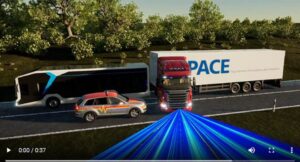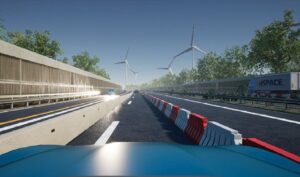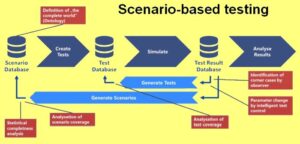Vehicle dynamics play an important role in validating intelligent systems. Michael Peperhowe, dSpace gmbh Advanced driver assistance systems and autonomous driving (ADAS/AD) functions are designed to make everyone on the road more safe. Design engineers have long validated these functions by simulating them in test scenarios involving other vehicles, pedestrians, and obstacles. But it is […]
dspace
Sensor simulation software provides high-rez visualization for testing autonomous vehicle functions
dSPACE is launching AURELION, a new sensor simulation solution that provides high-resolution visualization for testing and validating functions for autonomous driving. The solution, which can be operated either in the cloud or locally, generates photorealistic images in real-time for camera simulation and, using ray tracing, an exact environment for radar and lidar simulation. With AURELION, […]
Sensor-realistic simulation in real time
Advanced sensor simulation techniques can be used to validate functions for autonomous driving throughout the development process. Caius Seiger, Dr. Gregor Sievers • dSPACE GmbH Sensor-realistic simulation is a powerful way of validating sensor systems, which are an integral part of autonomous vehicles. Increasingly powerful computer systems make it possible to generate realistic sensor data […]
The data-driven road to automated driving
Data replay and enrichment tools help analyze driving scenarios and verify simulations based on real-world events. Jace Allen, ADAS/AD Engineering and Business Development, dSPACE Inc. For ADAS and highly automated driving (HAD) applications, the road to homologation–the process of showing a product meets regulatory standards and specifications — is a long journey that begins and […]
Data injection — Testing autonomous sensors through realistic simulation
Proof that autonomous vehicles are safe to put on the road begins with rigorous models of the sensors that guide them. Holger Krumm | dSPACE GmbH Onboard sensors are critical for autonomous vehicles to navigate the open road, but the real environment is full of obstacles. Everyday interferences such reflective surfaces, whiteout conditions, fog, rain, […]
Million-mile drives on computers that don’t move
Simulation is the only way to get the kind of confidence necessary to field autonomous vehicle functions. Karsten Krügel, Sven Flake, dSPACE GmbH HOW do you ensure that an autonomous vehicle will perform safely when the driver’s responsibility has essentially been removed? The necessity for reliable operation under this scenario is raising major challenges within […]
Development platform to support AUTOSAR 4.3 features
dSPACE is one of the first embedded software development tool providers to support comprehensive functionality for the development and validation of some of the latest AUTOSAR 4.3 features in its products. Technologies that have posed a challenge for many developers, such as secure onboard communication (SecOC), global time synchronization (GTS), and enhanced end-to-end (E2E) protection, […]
HIL simulator features scalable I/O, software configuration
With the new SCALEXIO LabBox, dSPACE now offers a compact high-performance system for hardware-in-the-loop (HIL) tests. The LabBox fits on every desk and can therefore be used for early function tests right at the developers’ workplace. The flexible system consisting of the LabBox and the SCALEXIO Processing Unit can be adjusted to meet different project […]
Production code generator supports automotive FMI 2.0 and AUTOSAR 4.2 software standards
With its latest Release, dSPACE has optimized its production code generator, TargetLink, to cover prominent standards in the development of embedded software. TargetLink 4.1 supports the Functional Mock-up Interface (FMI) 2.0 and the latest version of the AUTOSAR standard, AUTOSAR 4.2. Moreover, MISRA C compliance and code efficiency have been increased further and modular, model-based […]








